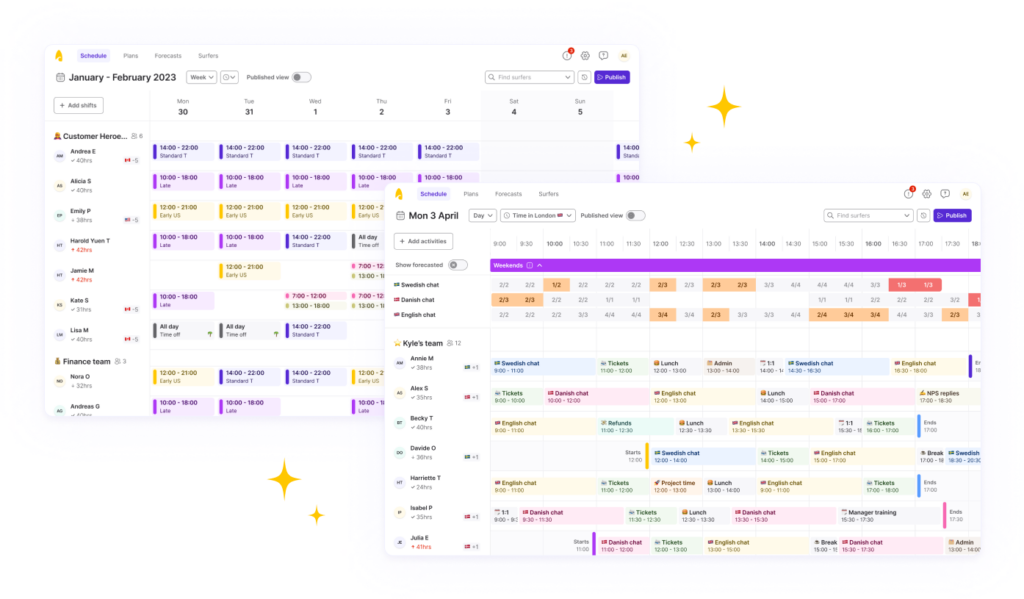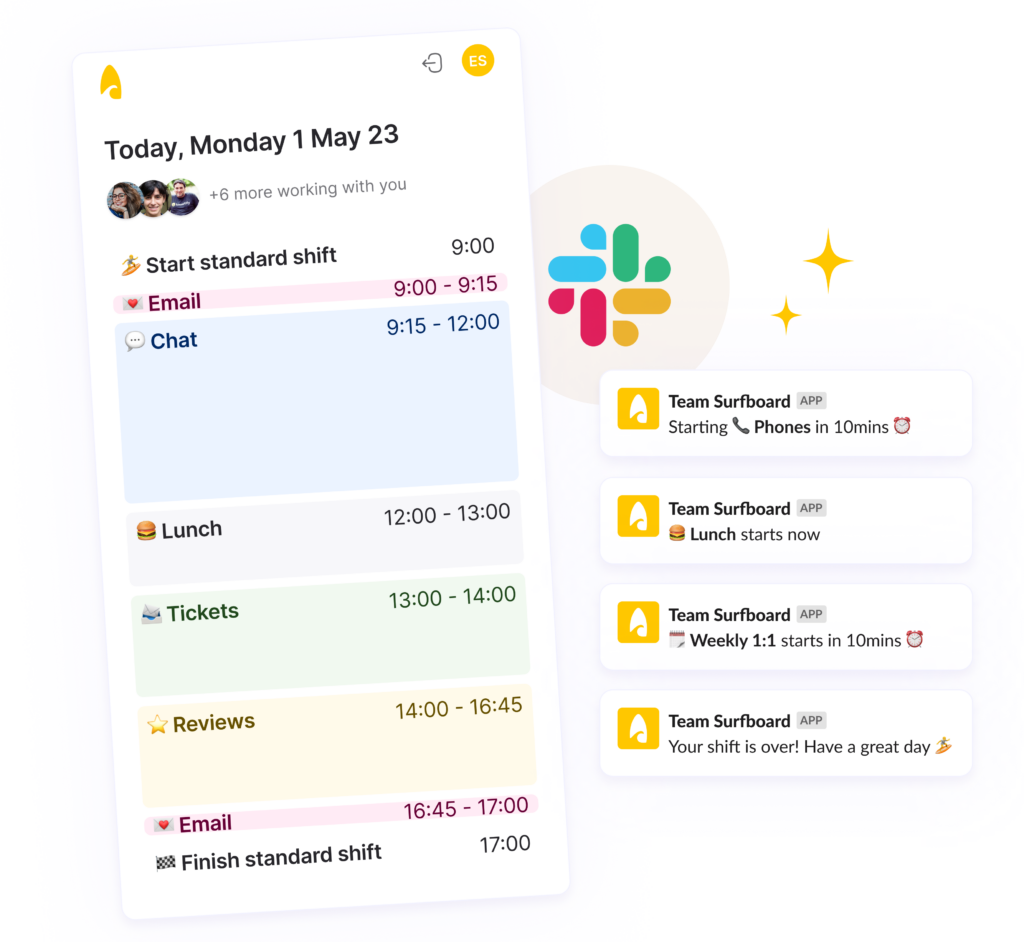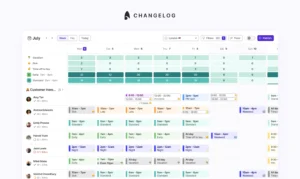
What is workforce scheduling? The definitive guide

Workforce scheduling is the process of meeting the level of demand that a company needs to function with a sufficient number of hours worked by employees. Some examples include producing a certain amount of products in manufacturing, providing great experiences for customers in service industries, or caring for patients in a healthcare setting. Workforce scheduling takes a lot different variables into account, such as time off, availability, holidays, different shift tasks, and sudden spikes in demand.
For example, in the lead up to Black Friday, online and physical retailers will often need to increase the number of staff they have available to meet the demand of customers. Setting a schedule of work hours for these team members is an example of workforce scheduling.
Workforce scheduling is an important factor in many different businesses, but it’s particularly important to any business that uses shift work or shift planning in some form. Take customer support teams for example. Businesses like Wolf & Badger (an online fashion retailer) have customers all over the world, meaning they need to provide support for these customers across many different time zones. As a result, they need their team to work on multiple different shifts. Using shift rules and rotations enabled them to cover the demands of their customers.
Workforce scheduling tends to follow a few distinct elements. We’ve listed them below and described each in detail.
- Forecasting
- Shift Planning
- Activity Scheduling
- Communication
Forecasting
The first step in workforce scheduling is predicting the level of demand that a business will experience over a given period of time. This could be the amount of products that will be ordered from an online retailer, or the amount of tables booked in a restaurant over a busy period. This may seem simple in theory, but it’s a lot harder to predict than it would initially appear. Supply chain data analytics companies like Quantics have whole lists of complexity drivers around demand forecasting.
When it comes to customer support, forecasting is useful when predicting the level of customer support that will be needed over a specific period of time. A lot of support teams still use spreadsheets to forecast their demand levels (those who use pen and paper for workforce scheduling are still using a ‘finger in the air’ approach to forecasting).
Other support teams use scheduling software for their workforce forecasting needs. The nice thing about using workforce scheduling software is that it allows you to input historical data ro predict demand. A lot of customer support teams use ticketing systems like Zendesk, Intercom, and Dixa, and then forecast demand for weeks or even months in advance.
Surfboard automatically forecasts using direct integrations providing detailed breakdowns of the staffing needed to meet your SLAs.
Shift planning
Shift planning, as mentioned previously, is an integral part of workforce scheduling. It’s the process of assessing what times need to be covered by a team, then designing shift patterns that ensure these hours are covered. This not only ensures hours are covered, but that teams can enjoy the flexibility of choosing a shift pattern that suits their lifestyle.
With the shift towards remote working and geographically distributed teams, making shift plans that suit a team has become much more important. Giving teams this flexibility allows them to be more engaged and happy in their roles. And, as we always say: Happy teams make happy customers.
Activity scheduling
Within workforce scheduling, there is a more granular approach called activity scheduling. Activity scheduling is assigning different tasks to individual team members within a specific shift. It’s more than just scheduling someone for an 8 hour shift. It’s breaking down what tasks they need to perform throughout the shift.
If we run with our example of a customer support team, they may have been assigned a shift pattern of Monday – Friday, 09:00 – 17:00. Within those shifts, their daily activities might be change at different times throughout the day. The reason for this being to suit the specific needs of customers on any given day. They might be on the phone helping customers, answering email, engaging in live chat, administrative tasks, or in meetings.
To get a visual understanding of this, have a look at how the Surfboard platform manages this below:

Communication
Internal communication of the schedules to teams is a crucial part of workforce scheduling. It goes further than just providing the schedules however. In an ideal world, the workforce are notified of the schedule, everyone works their assigned hours, and levels of demand are accurately met. There are, in reality, a multitude of factors that can affect this idealised scenario. Sickness, no shows, lateness, fluctuations of customer demand, last minute changes, and shift swaps all have the ability to throw a schedule into disarray.
Having the ability to communicate quickly and clearly amongst teams when unforeseen events like the ones listed above occur can be hugely valuable to teams who engage in workforce scheduling. In our customer support example, the concept of real-time communication within teams is critical. Customer support agents (or surfers, as we call them) need to communicate with their teammates or team leaders when something disrupts their workflow.
Surfboard integrates with Slack to provide surfers notifications of when to switch task, take a break or finish up for the day.

Our mission here at Surfboard is to make work more human. A big part of this is making workforce scheduling software that treats teams like humans, rather than resources.
Book a demo with our team to find out more.



